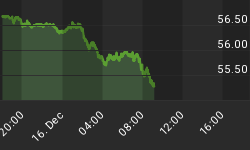I recently read an article by Mr Erik Swarts, which I found very interesting. I enjoy reading his articles, since he often identifies fractals on financial charts, in order to forecast, what may or may not happen. This is exactly what I specialize in.
In this particular article, he compares silver with the NASDAQ, and states:
"To further color what I perceived to be the unbridled risk appetite within the silver market, I contrasted silver with the parabolic rise and break of the Nasdaq market in 2000. Interestingly, both markets have traded very similar, both through the parabolic rise and breakdown, when contrasted with the relative strength of their closest cousins - the SPX for the NDX and GLD with SLV"
Specifically in that article (and the related articles), he compares the April 2011 peak in silver, with that of the Nasdaq in 2000. The correlation between the two patterns has been quite accurate thus far. However, I am of the view that this correlation will not continue; it is about to diverge significantly. This is why:
On financial charts, a particular pattern can often repeat itself, on the same chart, as well as on the chart of another good. Often, two patterns correlate for some time, but then it can suddenly diverge. Whether two patterns will continue their correlation or diverge, depends on many things.
One of the important things that I look at is the context in which the two patterns exist. If the context in which they exist are similar, then it is very likely that the correlation between the two patterns will continue, and vice versa.
When considering the context, one also has to look at the relevant time frame. If the relevant conditions surrounding both patterns, exist in similar time frames, or span over similar time frames, it increases the likelihood of the two patterns continuing the correlation.
The top in the Nasdaq in 2000, came at a time when the stocks were significantly overvalued compared to real assets. In fact, it was at all-time highs. This is because the Dow/gold ratio peaked in 1999, at about 44, and was still close to 40 when the NASDAQ peaked.
I do not believe silver was overvalued on a historical basis (on a short-term basis it might have been). It was only at its 1980 all-time nominal high, and still below the inflation adjusted high. The gold/silver ratio might have been at a recent low (it was at 32), but that is not an all-time low. In fact, the long-term mean (200 years and more) is lower. So, in terms of gold, silver was not at an extreme level, it was in fact undervalued.
The top in the Nasdaq was an all-time high, with no other peak coming close to it. As said before, the peak in silver was only at the 1980 all-time nominal high. So, the structures of the two charts are very different from a long-term perspective; therefore, the two peaks are very different from a long- term perspective. The macro view takes precedents over the short-term view, and in this case, the macro view, suggests that the pattern of silver should diverge from the Nasdaq pattern.
To illustrate that the macro view suggests that the path for silver is likely up, and not down from here, I have prepared the following chart that compares silver to the Dow:

The top is silver, and the bottom is the Dow. In order to put the two charts in similar context, I have looked for certain markers, and matched the charts accordingly. In 1980, the Dow made a bottom, as measured in gold and silver. For silver, a similar bottom would be when the Dow/silver ratio peaked. For both charts, these points, respectively, were at significant lows for each.
Using the Dow/gold and Dow/silver ratio as a marker is important, since it gives us a proper context. It gives us what a Dow/dollar ratio is not able to give us, since it is an unreliable measure, due to the nature of fiat money.
I have marked the points that I perceive to be similar (1 to 4). It is interesting to note that point 1, on both charts, came about 7 years after the Dow/silver ratio bottomed/peaked. Based on this comparison, we are at a point just above point 4, on the silver chart, relative to the Dow chart. If the silver pattern continues to follow the Dow pattern, we could test the $50 level soon, and could make new all-time highs over the coming years.
Also, it does not mean that I do not expect the markets to be in for a rough ride over the coming months. In fact, I expect a significantly rough ride for the stock markets; it is just that I expect silver to move up, counter to the direction of the general markets.
Respectfully,
"And it shall come to pass, that whosoever shall call on the name of the Lord shall be saved"
















